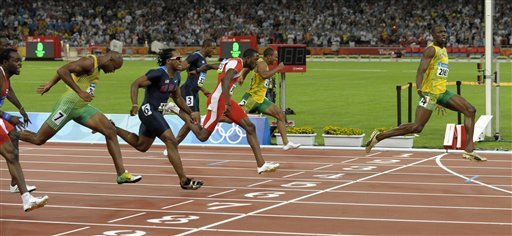
Jamaican sprinter Usain Bolt smashed the world records for the 100 meter and 200 meter track events at the 2008 Beijing Olympics. Bolt’s amazing performances were not normal and simply unbelievable leading to widespread suspicion that he must have used anabolic steroids. He has denied steroid use although his father has attributed Usain Bolt’s incredible speed to Trelawny yams.
But according to his dad, it is his love of yams which has really propelled him to stardom. “It is definitely the Trelawny yam,” Wellesley Bolt told reporters. The yam grown in Trelawny is one of the staples for citizens of the area, who believe that it has medicinal properties.
If yams were indeed responsible for the world records, then investigative reporters believed there must be steroids in those yams! Ironically, yams contain diosgenin which is the compound used by many companies to synthesize practically any steroid from testosterone to exotic designer steroids. However, the body is unable to convert diosgenin in vivo.
Yams do contain a precursor to steroids called diosgenin, although no study has proven the body can convert it into a steroid hormone, according to Jim Duke, a North Carolina ethnobotanist and expert on plants’ medicinal properties.
Chemist Jason Thomas explains the significance of diosgenin and its discovery in the wild yam for synthesizing anabolic steroids.
Russell Marker’s work with the Mexican yam for a birth control agent marked the beginning of the explosion of synthetic steroid production. Why? Because while Marker was only concerned with developing a birth control agent, endocrinologists and other scientists realized that Marker had found an efficient and cost effective route to progesterone, the parent compound of testosterone and to all anabolic steroids. The same is true in your body: from cholesterol you have to run it to progesterone before you make anything else. Progesterone is a natural branching point for other steroids and that is why Marker’s work was so huge for endocrinologists and chemists. Today many companies that make pure anabolic steroids still use the Mexican yam. Now that we know the recipe, it doesn’t take a Ph.D. chemist to do it. It’s a simple conversion from the diosgenin of the Mexican yam to whatever steroid you want to make. The 4-ring carbon chain, an otherwise complex structure to make chemically, is already in place for you in nature. You just have to mess around with things to change that
There is nothing magical about the yams unless an organic chemist has set up a steroid lab in the Trelawny parish in Jamaica to take advantage of the plentiful local supply of diosgenin. At any rate, I think Jamaica may see an increase in yam exports thanks to Usain Bolt!